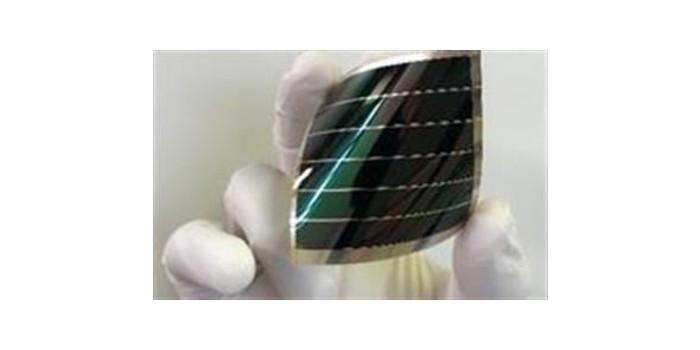 International. The French government's research institute, CEA, and the Toyobo Co. brand, manufactured small organic test photovoltaic (OPV) cells on a glass substrate, and test OPV modules on a lightweight and thin PET (polyethylene terephthalate) film substrate during their joint research project. The test products use a power generating material for OPVs that Toyobo has been developing.
International. The French government's research institute, CEA, and the Toyobo Co. brand, manufactured small organic test photovoltaic (OPV) cells on a glass substrate, and test OPV modules on a lightweight and thin PET (polyethylene terephthalate) film substrate during their joint research project. The test products use a power generating material for OPVs that Toyobo has been developing.
OPV has attracted a lot of attention as a next-generation solar cell. Toyobo aims to put the material into practical use early, primarily as a wireless power source in devices such as temperature, humidity and motion sensors.
The OPV cell is a solar cell that can be created by coating with energy-generating organic material electrodes, including carbon and sulfur atoms, on a glass or plastic substrate. As it can be molded into flexible and thin shapes, it easily adheres to walls or fabric surfaces where the predominant inorganic solar cells are not suitable for installation. Therefore, there are high expectations for OPV as a wireless power source for sensors and wearable devices, which are indispensable for the Internet of Things (IoT).
Toyobo has been developing a power-generating material for OPV to produce high-power outputs from low-light room light sources by using organic synthesis technologies that the company has cultivated in its years of research on fine chemicals. The material can be easily dissolved even in halogen-free solvents, allowing it to be coated evenly on a substrate, so it can generate stable energy with little individual difference.
To put the material into practical use at an early date, Toyobo conducted the joint research with CEA for six months starting in June last year. During the venture, Toyobo and CEA managed to manufacture the OPV small cells on a glass substrate with the world's top-level conversion efficiency by optimizing solvents and coating technique. In a verification experiment under neon illumination with 220 lux, equivalent to the brightness of a dark room, it was confirmed that the test product had achieved a conversion efficiency of about 25 percent, or 60 percent higher than that of amorphous silicon solar cells commonly used for desktop calculators.
They also completed prototype OPV modules on a PET film substrate with an effective area of 18 square centimeters, although they coated a power-generating material in a PET film, which was more difficult than in a glass substrate. The module was able to produce around 130 microwatts under the same lighting.
Toyobo plans to propose the use of this material mainly to solar cell manufacturers, based on the knowledge acquired through joint research. First, the company aims to have the material used by March 2023 primarily as a wireless power source for temperature, humidity and motion sensors.
Source: CEA.














